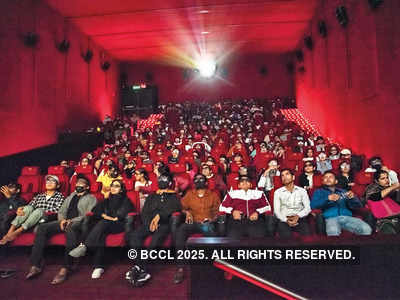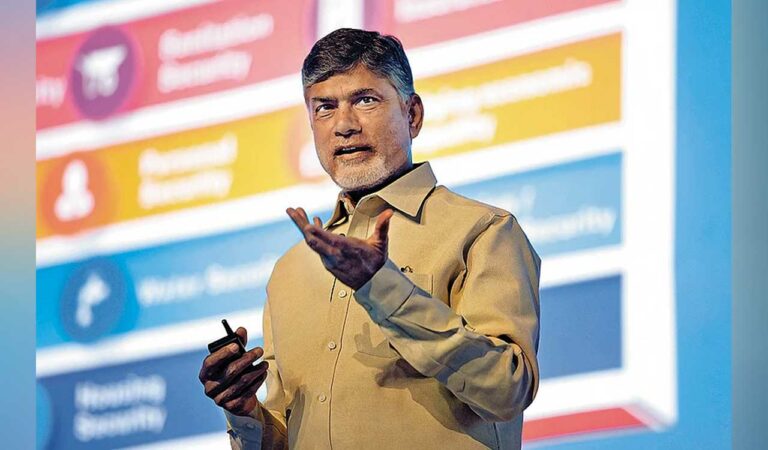Cinema Siddharth Roy Kapur and Murad Khetani , the extremely talented producers for some of Bollywood’s biggest hits, opened up about their journeys in running successful production houses respectively. The episode started with discussions around how producing films is often a thankless job in Indian cinema. Despite bearing the highest risks of finance, logistics and creativity, the fate of a film rests on the producer’s shoulders.
Whether a project soars or sinks, it’s the producer who must steer the ship, juggling challenges at every stage while rarely receiving due credit for their relentless efforts. Siddharth Roy Kapur highlighted how film production in India has evolved into a far more transparent and professional industry today compared to the myths and opacity of the 80s and 90s. He said, "A significant shift has occurred since the 70s and 80s as professionalism now drives the industry.

Actors are more disciplined, adhering to schedules and committing fully to one project at a time, unlike the past when they juggled multiple films a year with hurried set-hopping." This transformation, he emphasised, has brought greater accountability, clarity in financial dealings, and a more structured approach to filmmaking, debunking old misconceptions about money flow and box office reporting. He stressed that producers must focus on curating authentic, rooted and organic storytelling that resonates with India's heartland, much like the success seen in regional cinema.
When Akkshay asked Murad Khetani about his back-to-back successes with Kabir Singh and Animal, both in collaboration with the maverick filmmaker Sandeep Reddy Vanga, he asked Khetani how he as a producer, addresses and controls the mixed reactions of the Indian audience, who are extremely critical and sensitive on a lot of issues, considering Vanga’s films have been in constant limelight for sparking intense debate with their topics and scripts, often polarising audiences. Murad acknowledged the challenge, admitting that as a producer, one have to stand by bold storytelling while navigating the fine line between creative vision and audience sensitivity. He emphasised the importance of trusting the director’s voice, even when reactions are divided, but also staying attuned to the pulse of a market as discerning as India’s.
“In show business, visibility is everything, whether the buzz stems from adoration or outrage. Sometimes a film creates enough conversation, often leading to debates since people have varied viewpoints.” The host then steered the conversation toward the art of greenlighting scripts, a critical yet daunting process where producers sift through countless narratives to find those rare gems that truly connect with audiences.
When asked about their approach, both Siddharth and Murad echoed a shared philosophy: "See it through the audience's eyes—would you pay to watch this story?" Siddharth took it a step further, emphasising that conviction is key: "As a producer, you must first fall in love with the script yourself. Only when you’re utterly convinced of its power can you genuinely believe the audience will feel the same way." Also touching upon a very important discussion of how streaming is changing the audience behaviour and film production, it was observed that audiences prefer the convenience of watching content at home, which has increased due to streaming and the pandemic.
The revenue from streaming has sometimes surpassed theatrical releases, often serving as a safety net for theatrical releases, which can be unpredictable based on audience mood. Getting audiences back to theatres is challenging; however, when they do attend, they often come in large numbers. Despite the difficulties, major films are still achieving significant box office.
While big-budget spectacles continue to dominate, smaller productions are finding it increasingly difficult to compete. The audience are showing signs of coming back in full force, but with fewer films or films being released with a lot of gaps, they are often losing interest. The solution lies in a consistent pipeline of quality content across budget ranges, giving viewers compelling reasons to keep coming back.
* A lack of continuity in film releases can disrupt audience habits; regular cinematic content is essential for keeping viewers engaged. 2023 was a blockbuster year for the Indian cinema industry. 2024 had fewer big hits keeping the audience hooked.
So producers should churn out more cinematic content whether it succeeds or not. They should choose offbeat topics and subjects. There is also a shift in actor’s preferences over genres of movies.
With Salman Khan’s Wanted and Ajay Devgan’s Singham doing extremely well at the box office, most of the actors were keen to play a cop in their next film. Currently the trend of horror comedies is on the rise. The discussion also steered about the evolving relationships between studios, production teams, distribution channels, and exhibition sectors, noting a shift towards vendor-like interactions rather than true partnerships.
Talking about untapped opportunity with cinema in tier 2 and tier 3 films, it is observed that in smaller towns where entertainment options are limited with no amusement parks and no theater plays, cinemas remain the primary source of recreation. Yet, the existing exhibition infrastructure in these markets remains severely underutilised. The situation represents both a challenge and a massive opportunity for the industry.
Understanding audience preferences is a key priority. A curious trend emerging these days involves producing "heartland stories" about small-town India.These films often flop spectacularly in those very regions they depict, as it doesn’t appeal to the people in those regions.
Meanwhile, movies like Dhoom 3 and Tiger Zinda Hai - shot entirely overseas with glamorous action sequences-become pan-India blockbusters. With the observation of a marketing gap, both the producers resonated with the viewpoint that gone are the days of hyper-localised marketing campaigns that connected deeply with regional audiences. Today, efforts are reduced to just banners and posters—a far cry from the immersive strategies that once drove footfalls.
As a way forward, single screens and national chains must collaborate through a centralised distribution committee to streamline operations and outreach. The sector needs to present a combined front when engaging with marketing and distribution agencies to ensure these markets get the attention they deserve. Producers should bring back tailored, on-ground marketing strategies that resonate with regional audiences rather than relying on generic promotions.
When Tier 2 and Tier 3 towns thrive, the entire industry benefits. It’s time to stop treating these markets as afterthoughts and start recognising them as vital growth drivers. Talking about the regulatory challenges faced by producers often hampers the business operations within the film industry.
Producers discussed their wish list for improvements and raised concerns regarding excessive regulations requiring numerous approvals (NOCCs), which complicate business operations for exhibitors. Discussing the role of AI in filmmaking, it was discussed how with AI's potential, it can help reduce VFX costs, dubbing, and subtitling while improving efficiency and quality. AI can definitely improve production timelines, but it may also limit the generation of unique storytelling.
The producers also felt that creative voices are irreplaceable. AI may assist but cannot replicate human creativity..
Top

Siddharth Roy Kapur & Khetani discuss movies on podcast

Siddharth Roy Kapur highlighted how film production in India has evolved into a far more transparent and professional industry today compared to the myths and opacity of the 80s and 90s.











